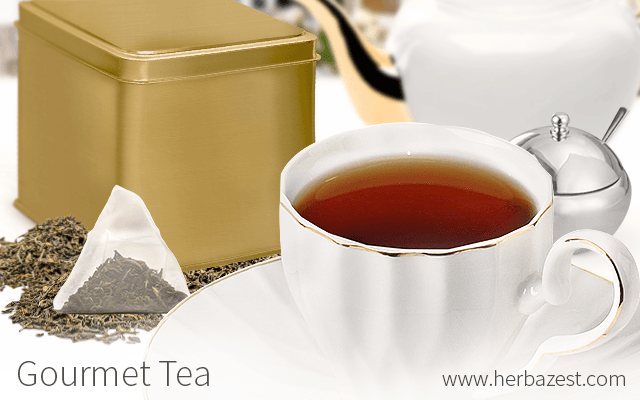The common belief among tea enthusiasts is that only brewing tea from the tea leaves guarantees a rich flavor and aroma. Tea bags are believed to contain lower grades of bioactive compounds, deprived of most of their essential oils and polyphenols.
While this is true in many cases, some tea manufacturers have invested their resources in developing technology that allows them to package their gourmet tea without altering their quality and flavor. Exploring gourmet tea can be an unforgettable experience and a healthy way to indulge oneself.
About Gourmet Tea
There is no definition of gourmet tea, but the term usually refers to a higher-quality of tea. It tends to be more expensive than lower-grade tea, and it is often harder to find in the stores. Most gourmet tea, also called specialty or premium tea, is sold as loose leaves. However, it can also be purchased in tea bags that are three-dimensional, such as pyramid-shaped tea bags, and allow the leaves to move around and infuse the water more efficiently.
What Makes Tea Gourmet?
The quality of tea can be dictated by a variety of factors, for example, the size of the leaves. There are several different grading systems around the world, but the main concept behind them is the same: whole leaves are used to make the highest quality gourmet tea, while broken leaves, dust, and fannings are mainly used in tea bags.
Another factor that gives tea its gourmet status is the harvesting season, called a flush. Although the first flush is said to produce the best tasting tea, it is not always the case as other seasons might yield better quality tea in terms of flavor and aroma. Also, the climate and terrain, particularly high elevations - like those in which the famous Darjeeling tea is grown - are said to add depth and richness to tea.
Gourmet tea can also include rare varieties of tea often cultivated on small tea estates. For instance, the Chinese Da Hong Pao, a variety ofOolong tea, is so rare that its plantation is secured all year round with guards and only a few hundred grams are harvested annually. Another rare gourmet tea is Gyokuro, a variety of Japanese green tea, which typically costs 300-500 US dollars for 3.5 ounces (100 grams).
Finally, gourmet tea is often labeled Fairtrade or organic, which is generally seen as having a higher value and often reflected in the price. Fairtrade mark signifies that the production of tea ensured fair pay and decent working conditions to plantation workers, while the organic tea logo means that tea has been cultivated in accordance with regulations related to the use of insecticides, pesticides, synthetic fertilizers, and more.
Where to Buy Gourmet Tea?
Due to its price and rareness, the supplies of gourmet tea in the local supermarkets might be limited. Specialty tea stores are the best place to find gourmet tea, while online sellers might offer it at more affordable prices and enable one to experience specialty tea from all over the world.
Sources
- Modern Tea: A Fresh Look at an Ancient Beverage
- Tea Culture: History, Traditions, Celebration, Recipes & More
- Vinegar & Tea




